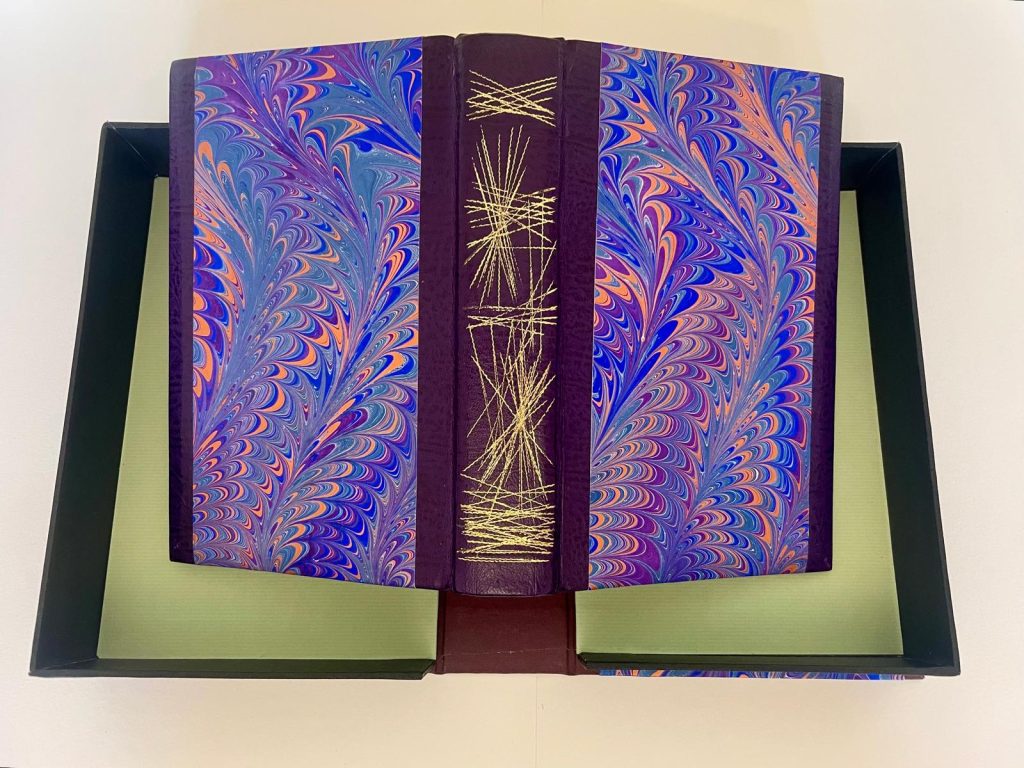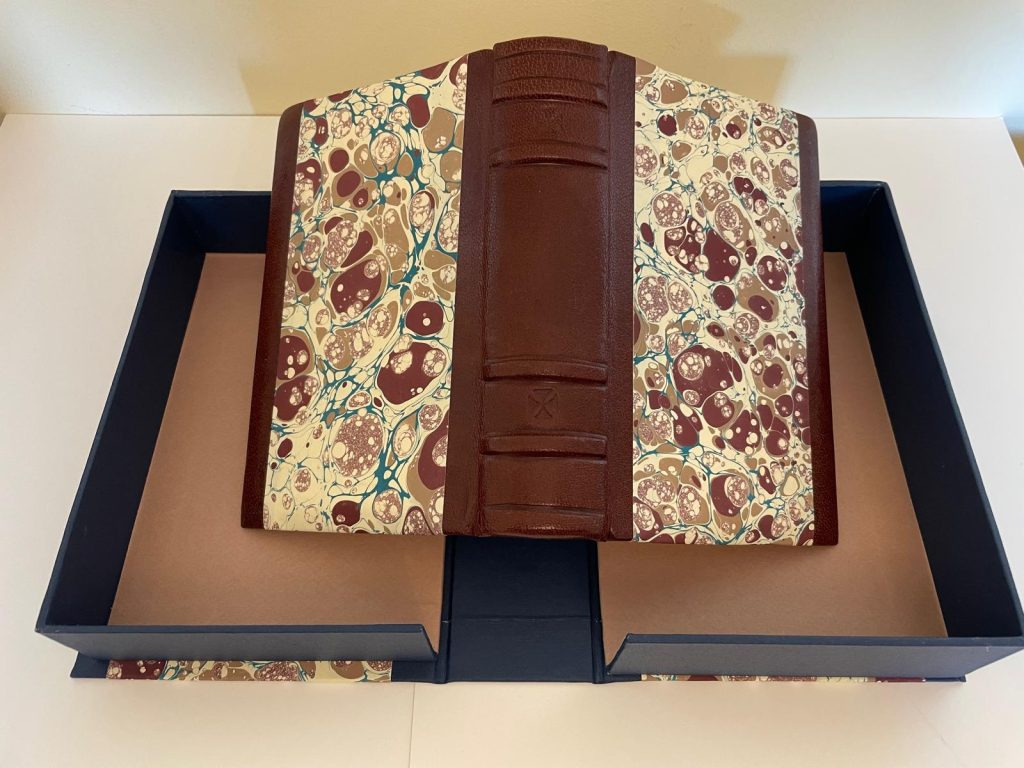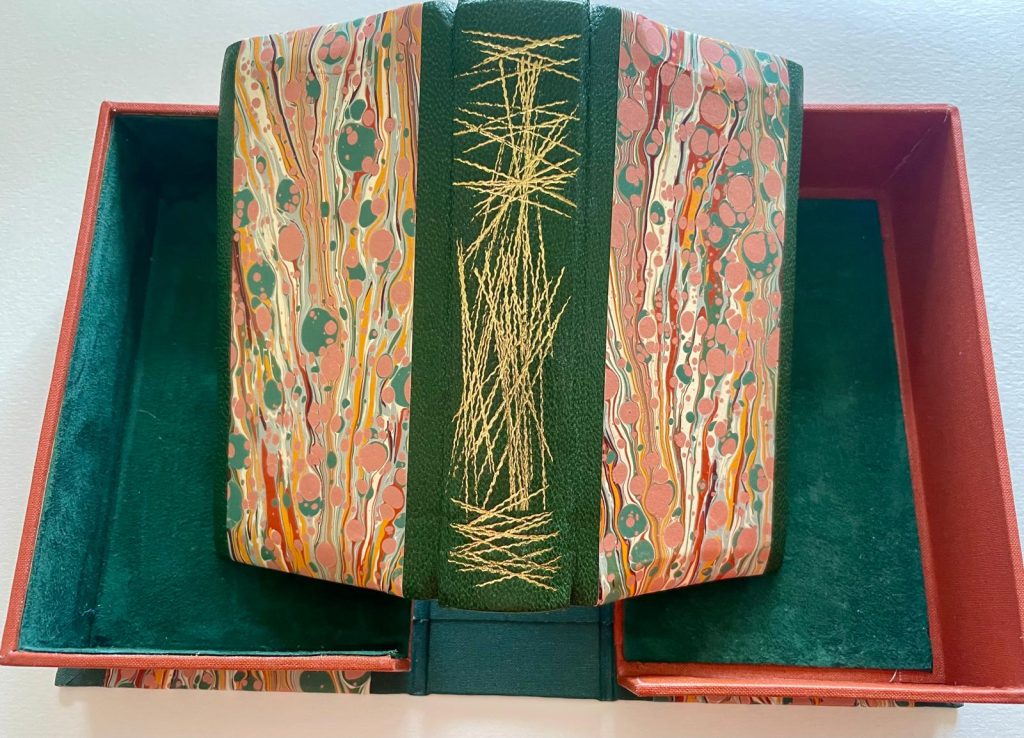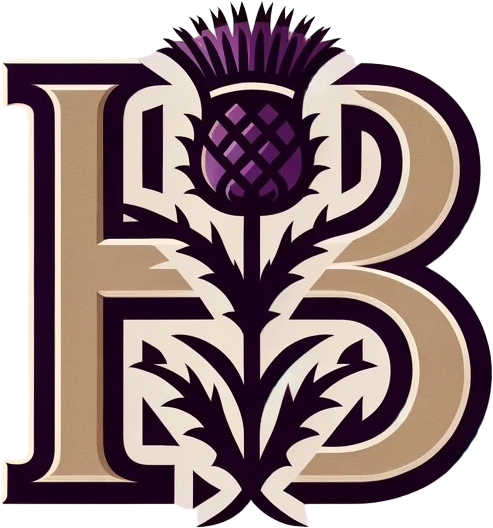Decorative papers have long been a vital component of bookbinding, enhancing the beauty and uniqueness of books with their intricate designs and rich textures. These papers are not just functional; they add character, personality, and artistry to the finished product, making each book a unique piece of art. From classic marbled papers to handmade paste papers and the delicate art of Suminagashi, decorative papers used in bookbinding elevate the overall aesthetic appeal. In this article, we delve into the different types of decorative papers that transform ordinary books into exquisite collectibles.
Types of Decorative Papers Used in Bookbinding
Marbled Papers
Marbled papers are among the most recognized and popular types of decorative papers in bookbinding. This centuries-old art involves floating colours on a water or size bath, manipulating them into intricate patterns with combs, brushes, or other tools, and then transferring the design onto paper. Each sheet of marbled paper is unique, offering endless possibilities for creative expression.

Marbled papers come in various designs, including:
- Stone Marble: Features soft, rounded shapes resembling pebbles or stones. It’s one of the earliest marbled patterns and often used in traditional bindings.
- Nonpareil: Known for its delicate, wavy lines that are evenly spaced, this pattern is often seen in antique and fine bindings.
- French Curl: Recognized by its swirling, circular designs that resemble curls, giving the paper a dynamic and flowing appearance.
- Spanish Marble: Displays bold, often chaotic patterns with vibrant colours, making it a striking choice for book covers and endpapers.
Marbled papers are prized for their visual appeal and are often used for book covers, endpapers, and decorative inserts, adding a touch of luxury and craftsmanship to any book.
Paste Papers
Paste papers are one of the oldest forms of decorated paper used in bookbinding. This method involves applying coloured paste made from pigments and starch onto paper, which is then manipulated with tools, brushes, or even fingers to create various patterns and textures. The result is a vibrant and textured paper with a slightly glossy finish that is both durable and visually engaging.
The designs of paste papers range from simple swirls and combed lines to more complex geometric patterns and abstract motifs. Because each sheet is handmade, paste papers often have a tactile quality and depth that set them apart from other decorative papers. They are typically used for book covers, endpapers, and box linings, adding a distinct, artisanal touch to the finished book.

Suminagashi
Suminagashi, meaning “floating ink” in Japanese, is an ancient form of paper marbling that dates back over a thousand years. This delicate art form involves dropping ink onto the surface of water and gently blowing or swirling the ink to create ethereal, cloud-like patterns. Once the desired pattern is achieved, a sheet of paper is carefully placed on the water’s surface to absorb the design.
The result is a light, airy pattern that resembles rippling water or gentle waves. Suminagashi papers are typically monochromatic or feature subtle colour gradients, making them a perfect choice for projects that require a more understated elegance. These papers are often used as endpapers or decorative elements in fine bindings, adding a touch of historical and artistic significance to the book.
Choosing the Right Decorative Paper for Your Bookbinding Project
Selecting the appropriate decorative paper depends on the desired style, function, and visual impact of the book. Marbled papers offer vibrant colours and intricate patterns, perfect for bold statements, while paste papers provide texture and a handcrafted feel. Suminagashi, with its delicate and serene designs, is ideal for those seeking a more subtle yet sophisticated look.
Incorporating decorative papers into bookbinding not only enhances the beauty of the book but also showcases the artistry and craftsmanship involved in the binding process. Whether you are restoring an old volume or creating a bespoke masterpiece, the right decorative paper can elevate your project to a work of art.


